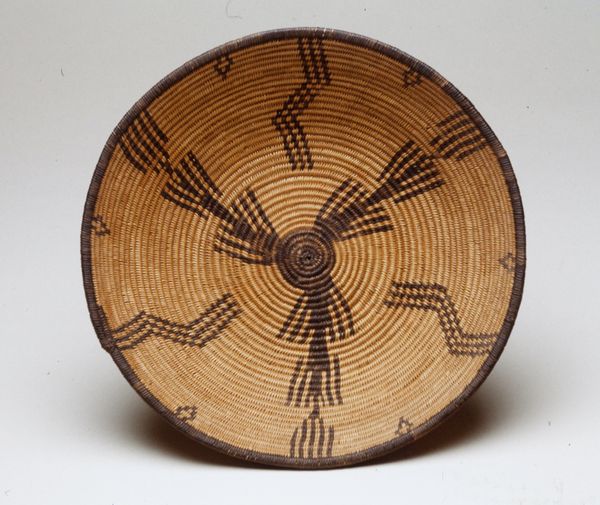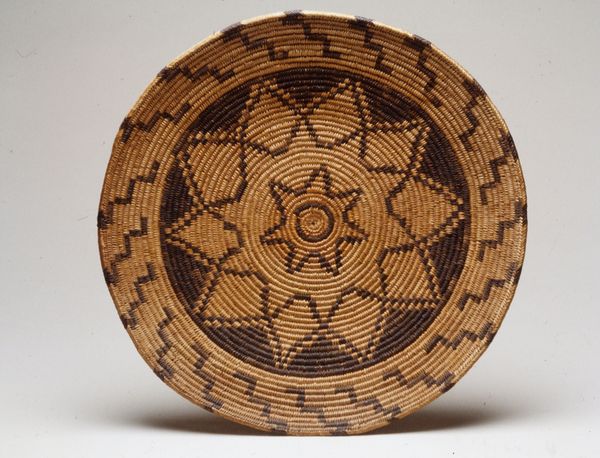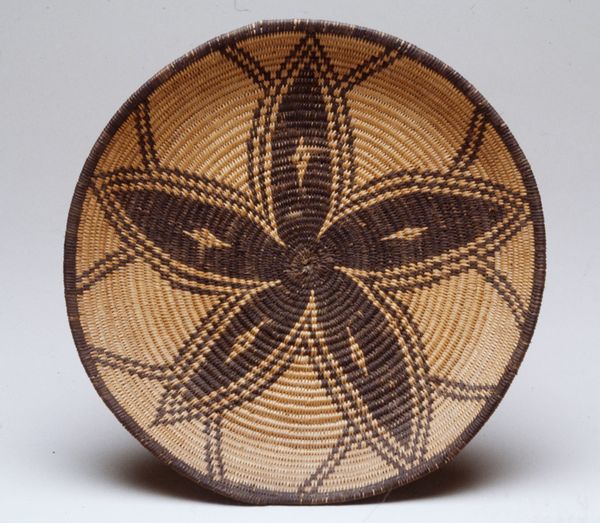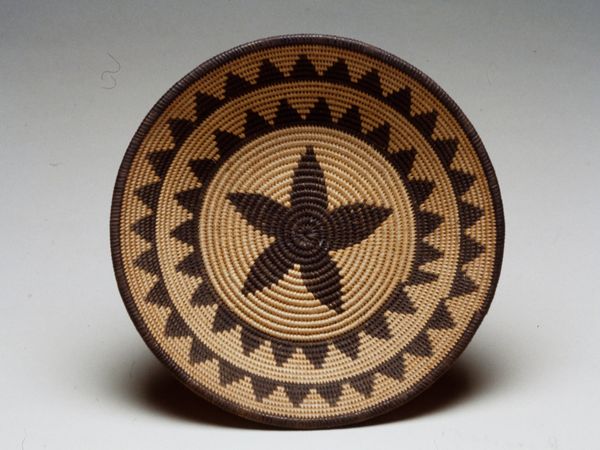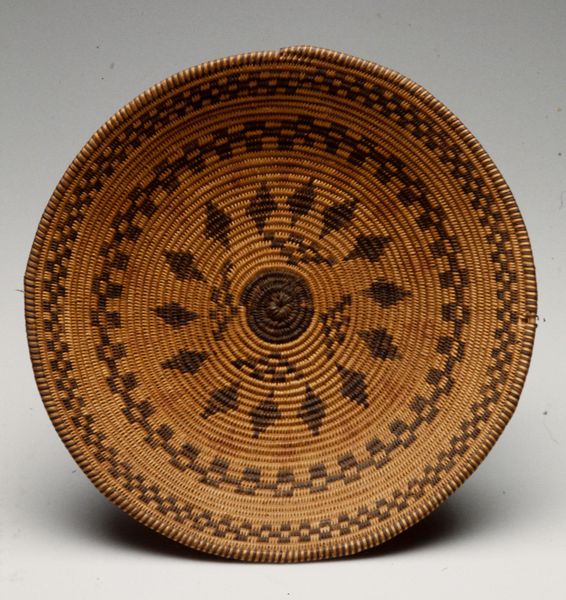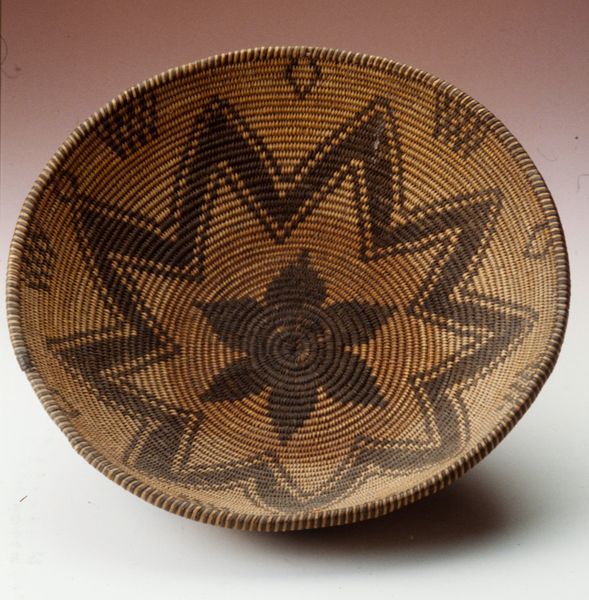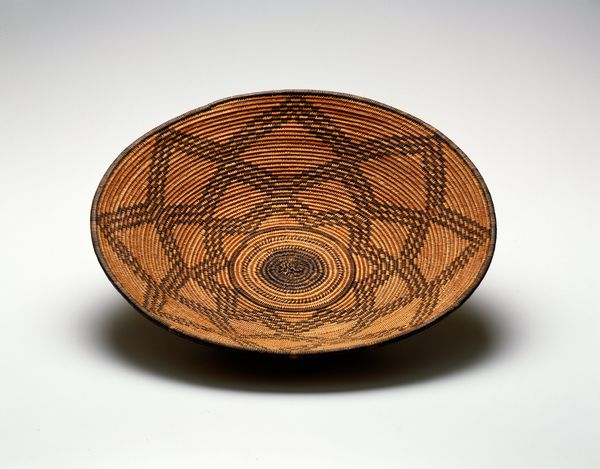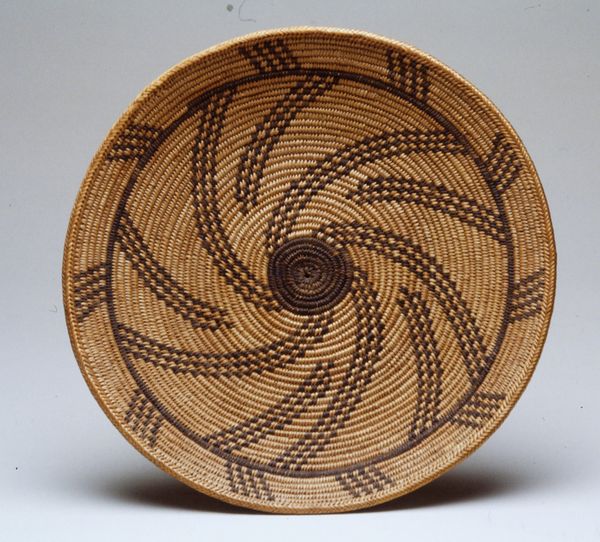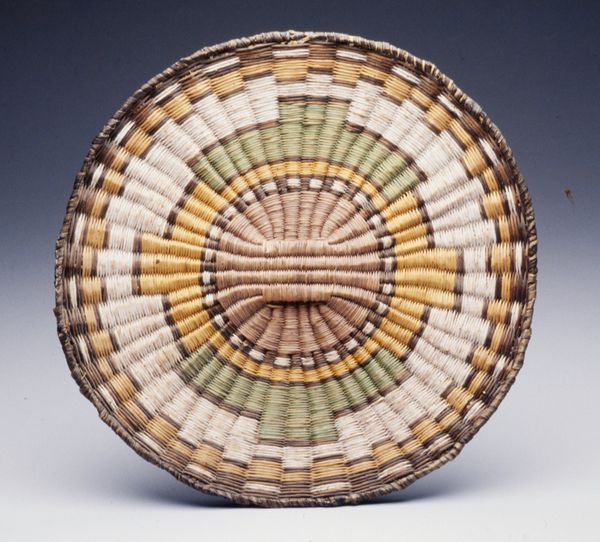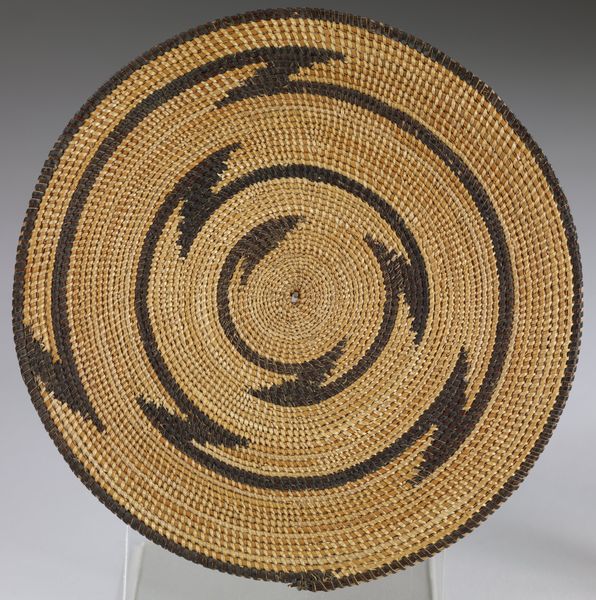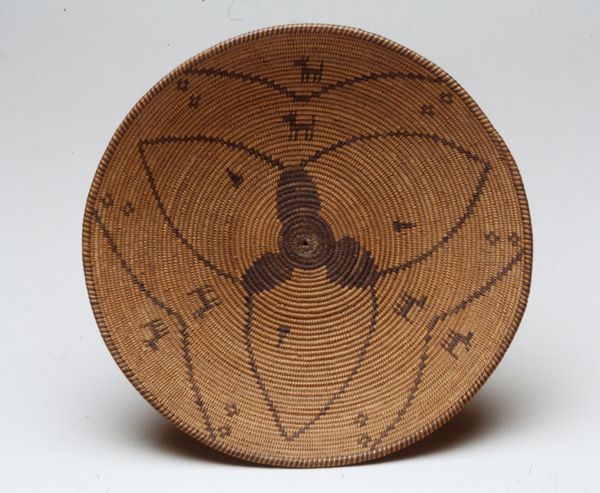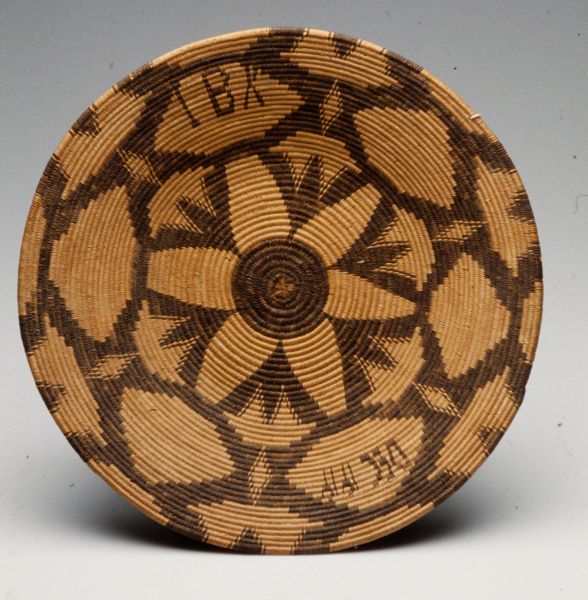
fibre-art, weaving, textile
#
fibre-art
#
pottery
#
weaving
#
textile
#
earthenware
#
indigenous-americas
Dimensions: 2 3/4 x 10 in. (6.99 x 25.4 cm)
Copyright: Public Domain
Curator: Here we have a coiled basket made by an Indé, or Apache, artist. This piece likely dates to the early 20th century. Editor: It has such a stillness to it, doesn't it? And that tightly woven surface practically hums with energy. Curator: Indeed. Weaving, particularly basketry, carries profound cultural significance in many Indigenous communities. It is far more than simply a utilitarian object. It's a tradition passed down. Editor: Absolutely! It makes me think of quiet hands patiently working, connecting to ancestors through the repetition. Like a meditation, and the basket becomes this tangible, beautiful prayer. I'm really drawn to the geometric design; it’s so purposeful. Curator: The designs certainly have purpose, representing elements of their world. You'll notice repeating geometric motifs. Common images could stem from stories, clan symbols, or natural phenomena. These designs encode tribal identity, knowledge and belief systems. The very act of weaving became intertwined with the social and spiritual life. Editor: It makes me think of coded language. Do we know anything specific about the meaning of, say, the central star-like shape? Curator: Without specific documentation from the artist, interpretations remain speculative. One possibility is the "Morning Star," often associated with guidance and hope. We see that motif echoed and punctuated around the design with little crosses, or stepped pyramids, or geometric renderings of animals perhaps. But meaning shifted across time, location, generations of artistry and so we have a general interpretation rather than direct insight. Editor: That unknowability adds another layer, doesn’t it? The beauty holds secrets and prompts this powerful act of gazing and imagining. You just know so much intention has been poured into its making. What can art handling and cultural institutions learn and understand about objects like this today? Curator: Great care must be taken to ensure Indigenous communities participate actively in decisions around display, interpretation and conservation of culturally important objects. Understanding appropriate use, symbolism, and perhaps restrictions on who can view or handle these items should take priority in exhibition practice, today and in the future. Editor: So much more than meets the eye here, a quiet symphony of skill, intention, and cultural heritage whispering across time. Curator: Absolutely. Its presence here invites reflection on the hands that made it, and the stories it silently holds.
Comments
No comments
Be the first to comment and join the conversation on the ultimate creative platform.
